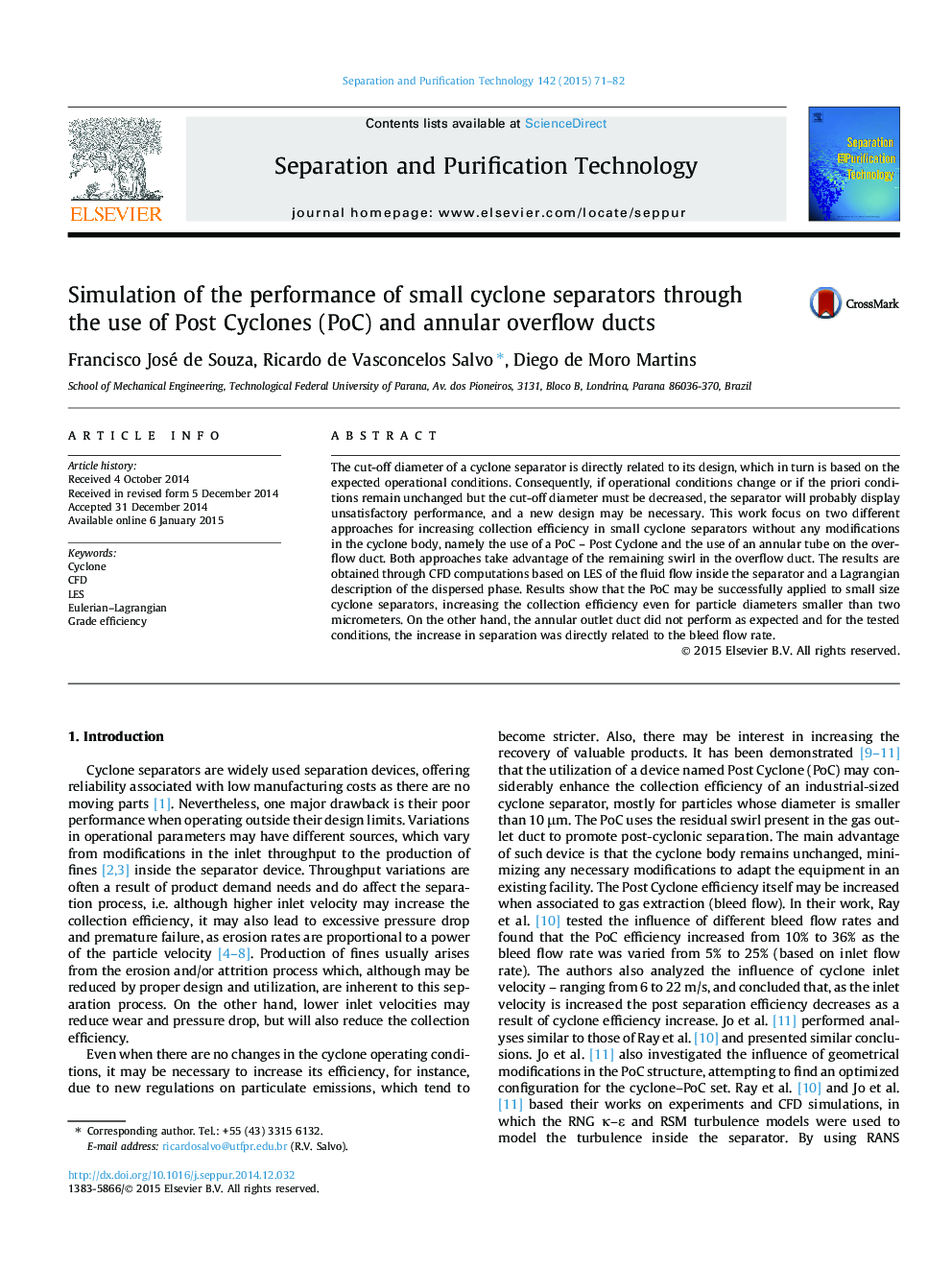| Article ID | Journal | Published Year | Pages | File Type |
|---|---|---|---|---|
| 640794 | Separation and Purification Technology | 2015 | 12 Pages |
Abstract
The cut-off diameter of a cyclone separator is directly related to its design, which in turn is based on the expected operational conditions. Consequently, if operational conditions change or if the priori conditions remain unchanged but the cut-off diameter must be decreased, the separator will probably display unsatisfactory performance, and a new design may be necessary. This work focus on two different approaches for increasing collection efficiency in small cyclone separators without any modifications in the cyclone body, namely the use of a PoC - Post Cyclone and the use of an annular tube on the overflow duct. Both approaches take advantage of the remaining swirl in the overflow duct. The results are obtained through CFD computations based on LES of the fluid flow inside the separator and a Lagrangian description of the dispersed phase. Results show that the PoC may be successfully applied to small size cyclone separators, increasing the collection efficiency even for particle diameters smaller than two micrometers. On the other hand, the annular outlet duct did not perform as expected and for the tested conditions, the increase in separation was directly related to the bleed flow rate.
Related Topics
Physical Sciences and Engineering
Chemical Engineering
Filtration and Separation
Authors
Francisco José de Souza, Ricardo de Vasconcelos Salvo, Diego de Moro Martins,
